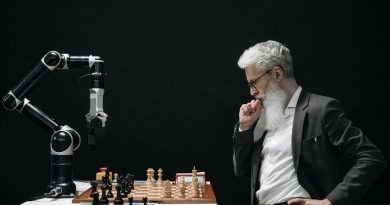Your Next Doctor’s Visit Might Be with an AI: The Rise of AI-Powered Diagnostic Tools
For centuries, a medical diagnosis has been a deeply human process. A doctor listens to your symptoms, considers your history, and applies their years of training and hard-won experience to identify the problem. It’s a powerful system, but one that is also subject to the limits of human memory, interpretation, and fatigue.
Now, a powerful new assistant is entering the examination room, and it has the potential to make medicine more accurate than ever before. Artificial intelligence is no longer just a research project in a lab; AI-powered diagnostic tools are being deployed in real hospitals and clinics, and they are spotting diseases with breathtaking precision.
While your doctor isn’t being replaced, their toolkit is getting a massive upgrade. Your next diagnosis will likely be a collaboration between human experience and artificial intelligence.
How AI is Becoming a “Super-Doctor”
AI’s power in medicine comes from its ability to see and process patterns on a scale that is impossible for the human brain.
1. The “Eagle Eye” for Medical Scans: This is one of the most mature and impactful applications of medical AI today. AI models, trained on millions of medical images like X-rays, CT scans, and MRIs, are learning to detect signs of disease with incredible accuracy. In many cases, they are meeting or even exceeding the performance of human radiologists. An AI can spot a tiny, nascent tumor on a mammogram or the earliest signs of diabetic retinopathy in an eye scan—subtle patterns that the human eye might easily miss after a long shift.
2. The “Master Diagnostician” for Complex Cases: Imagine a patient presenting with a confusing constellation of symptoms. A human doctor can draw upon their own experience and research. An AI can simultaneously analyze the patient’s symptoms, lab results, and entire medical history, and then cross-reference that data against every medical journal, clinical trial, and textbook ever written—all in a matter of seconds. It can then present the human doctor with a list of potential diagnoses, ranked by probability, along with links to the supporting medical literature. This is especially powerful for identifying rare diseases that a single doctor might never have seen before.
3. The “Crystal Ball” for Predictive Health: The next frontier is moving from diagnosing existing diseases to predicting them before they ever happen. By analyzing a combination of genetic data, lifestyle factors from health records, and subtle trends from wearable devices, new AI models are starting to identify patients at high risk for future health crises like heart attacks, strokes, or the onset of diabetes. This allows for proactive, preventative care that could save lives.
Your Doctor Is Still in Charge
It is crucial to understand that this is not about replacing doctors. It’s about augmenting them with a powerful new co-pilot.
The AI is a phenomenal tool for data analysis. It can sift through mountains of information and highlight potential areas of concern. But the human doctor remains at the center of the process. They use their experience and judgment to interpret the AI’s findings, to consider the patient’s unique context, and most importantly, to provide the empathy, communication, and human touch that are at the heart of medicine. The AI handles the data; the doctor handles the patient.
The Challenges of Trust and Bias
This new technology is not without its hurdles. The AI models must be trained on diverse datasets to ensure they are accurate for all populations and do not perpetuate existing health inequities. Patient data privacy is paramount, and these systems must be protected with the highest levels of security. And finally, both doctors and patients must be educated on how these tools work to build the trust necessary for adoption.
The future of medicine is a collaborative one. Your doctor’s visit will still be with the trusted professional you know, but they’ll be coming to the table armed with insights from an AI that has analyzed your health with a depth and speed that was previously the stuff of science fiction.




